A new landmark study shows most Canadian newsrooms remain overwhelmingly white even as immigration continues to redefine this country’s demographics, resulting in much public lament over the lack of diversity in the media.
Described as “historic” in terms of its scope and reach, a new race- and gender-based study from the Canadian Association of Journalists (CAJ) has found that “almost half of all Canadian newsrooms exclusively employ white journalists.”
“The typical Canadian newsroom is not representative of the Canadian population,” the final 17-page report, released Nov. 25, states.
In an email statement, CAJ president, Brent Jolly, told New Canadian Media that “while these numbers do not tell a complete story, they do provide a first glimpse at the makeup of Canadian newsrooms from coast to coast to coast.”
The national survey, conducted between November 2020 and July 2021, invited the editors-in-chief of 636 radio, television, digital and print news outlets to respond, out of which 147 sent full and verified answers. That represented 209 outlets across the country and 3,873 journalists combined. The results are mapped on out the CAJ’s website.
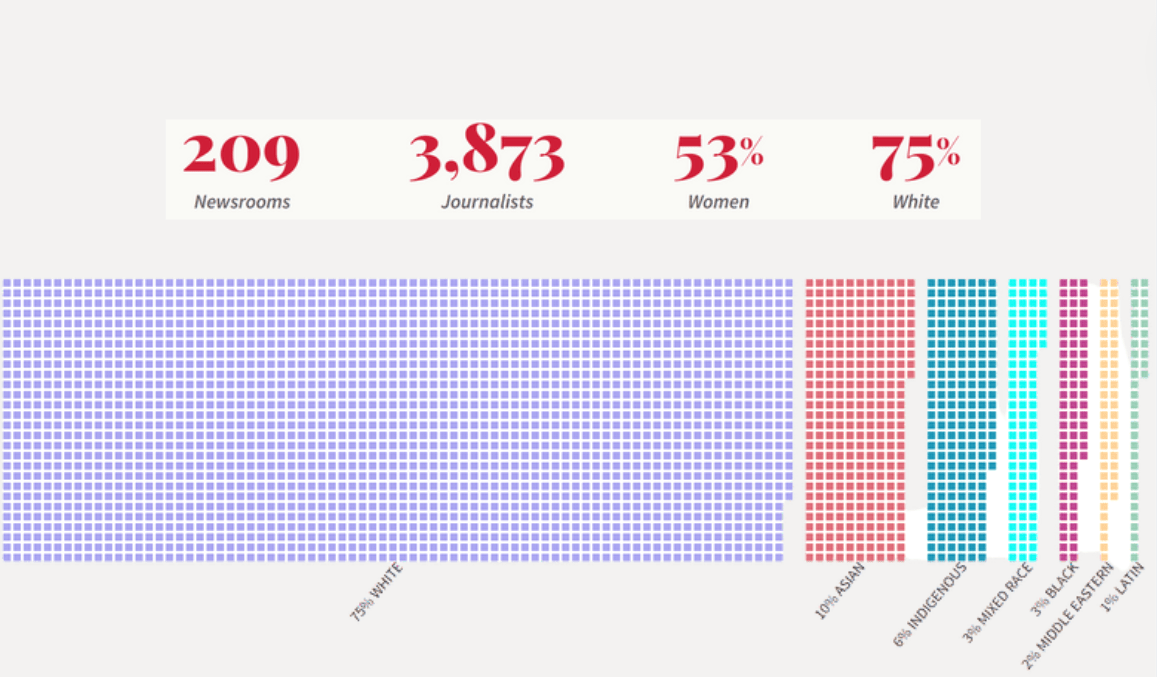
According to the report’s authors, it’s the first time in Canadian media history that so many organizations agreed to participate in such a study. In 1994, a national survey by the Canadian Daily Newspaper Association was sent to 82 editors, but only half responded. And out of the 18 “largest newspapers” Canadaland surveyed in 2016, only three sent answers back.
“Without a doubt, our industry is undergoing significant changes — from addressing workplace wellbeing and mental health, to uniting against online harassment and infringement on press freedoms, to being transparent about the diversity of our own newsrooms,” Jolly wrote in his email statement.
“Each of these issues are challenges to the very foundations of our craft, and will not be solved without significant work.”
Overestimated diversity
The lack of diversity has triggered a reckoning among newsrooms and journalism schools, leading to some measures adopted that have seen an increase of it.
But “(n)ewsroom managers tend to overestimate the diversity of their newsroom,” the report asserts.
According to the CAJ, those numbers are likely being inflated by a “handful of large newsrooms that employ a large number of (visible minority) reporters.” Ultimately, however, “most Canadian newsrooms tend to be whiter.”
For instance, even though 84 per cent of newsrooms employ zero Indigenous journalists, “of those that do, 74.8 per cent work at either the CBC or the Aboriginal Peoples Television Network.” Likewise, 50 per cent, 40 per cent, and 47.3 per cent of Latin, Middle Eastern and Black journalists, respectively, work at the public national broadcaster.
That means that about nine in 10 newsrooms have no Latin, Middle Eastern or Mixed Race journalists. About nine in 10 have no Black or Indigenous journalists. While Asians are “more prevalent in newsrooms,” the study found, two thirds of newsrooms employ none of them.
“By comparison,” the study states, “just three per cent of newsrooms have no white journalists on staff.”

The study found that some demographics “seem to be overrepresented when compared to the national population level,” including Indigenous (6.4 per cent of journalists compared with 4.9 per cent of the population), Middle Eastern (1.7 per cent compared with 1.5 per cent) and Mixed Race (3.1 per cent compared with 0.7 per cent).
“However, it is important to emphasize that these numbers are driven by just a few newsrooms. Ninety per cent of newsrooms surveyed have no Latin, Middle Eastern or Mixed Race journalists on staff.”
Women at a disadvantage
Women, who make up 50.4 per cent of the country’s population, according to 2016 census data, are also at the margins of the industry, the study found, even though the national data shows women journalists outnumbering men (52.7 per cent compared to 46.7 per cent).
That is because most women are working either part-time (61 per cent) or as interns (64.9 per cent). “Among full-time staff, women make up 50.7 per cent of journalists,” the report states, “compared to 48.9 per cent men and 0.4 per cent non-binary.”
The report also found that “84.2 per cent of all white journalists work full time compared to 63.6 per cent of Black journalists and 60 per cent of Middle Eastern journalists. Around three quarters of all Asian, Latin, and Mixed Race journalists work full time. Around 8 in 10 Indigenous journalists surveyed work full time.”
Even at the Toronto Star, which is considered a progressive newspaper often focusing on issues affecting the working class, “68.5 per cent of full-time staff are white, 22.8 per cent are Asian and none are Indigenous,” the report found, based on the Star’s own data.
“The newsroom reported between one and four Black, Latin and Middle Eastern staff.”
(It should be noted that the information is based on the Star’s own “diversified data” which did not “collect specific numbers for certain questions, like the number of Black or Middle Eastern staff, but instead collected ranges.” Therefore, the CAJ did not include their data in the final results).
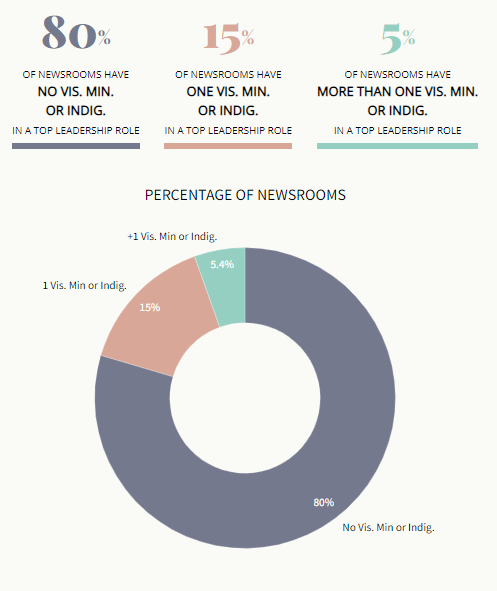
Encouraging diversity
When asked what they’re doing to encourage more diverse applicants to come forward, some newsroom leaders admitted “no additional steps” are being taken.
Some of the steps that were identified included targeting schools and specific associations representing diverse journalists, posting salaries and creating diverse hiring committees.
In his email statement, Jolly said despite the profession being “under increasing scrutiny and attack,” any long-term solution will require industry leaders working together, transparently.
“While it is incumbent upon all of us to find new ways to tell the complex and important stories of our time, it is also our responsibility to be up to the task of addressing our own strengths and weaknesses with thoughtful reflection.”
Fernando Arce is a Toronto-based independent journalist originally from Ecuador. He is a co-founder and editor of The Grind, a free local news and arts print publication, as well as an NCM-CAJ member and mentor. He writes in English and Spanish, and has reported from various locations across Canada, Ecuador and Venezuela. While his work in journalism is dedicated to democratizing information and making it accessible across the board, he spends most of his free time hiking with his three huskies: Aquiles, Picasso and Iris. He has a BA in Political Science from York University and an MA in Journalism from Western University.

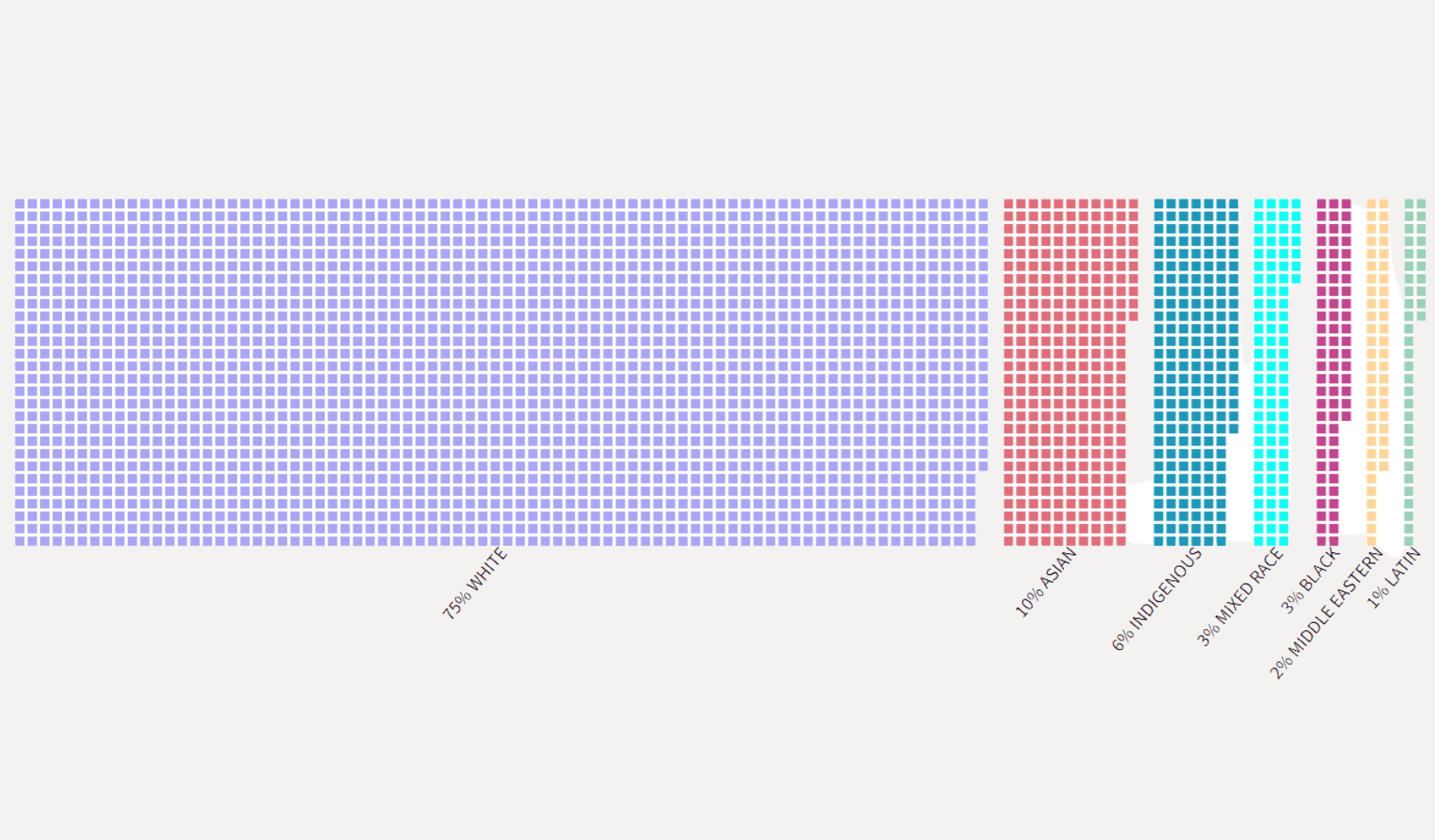


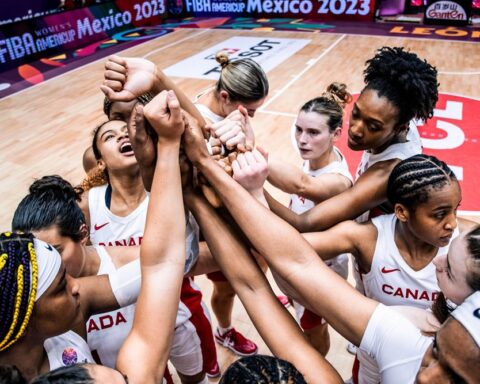
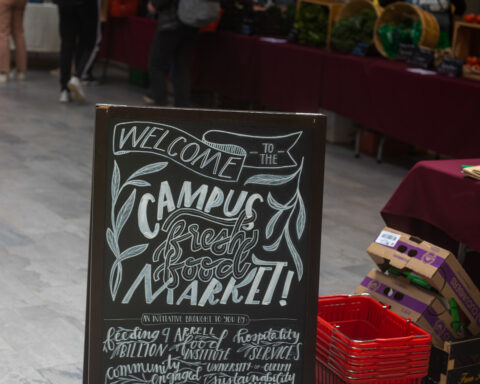
Feel free to not publish this comment, if you wish to consider revising what is written in the article
To say what is in the opening paragraph “…half of them [media outlets?] are staffed entirely by white individuals. Nine in 10 have no colour at all…” seems to be self-contradictory.
How are there 40% of them (90% minus 50%) that apparently employ at least one person of colour, but at the same time, have no colour at all?
Also, it may require a bit more emphasis that these stats represent only a small fraction of all media in Canada, since most did not send in their stats. Or else people may literally believe that there has been confirmation that 90% of all media outlets have no colour at all.
[…] asking themselves how to properly cover or talk about certain communities because they’re lacking members from these […]